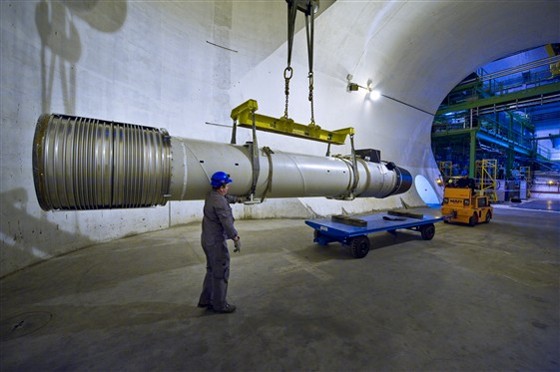Director's Corner
15 October 2009
 Barry Barish |
CERN prepares for LHC commissioning
Once again, the Large Hadron Collider at CERN is moving to centre stage. The LHC is the world's largest and highest-energy particle accelerator designed to collide protons at energies of 7 TeV per beam. Just about one year ago, as commissioning of this complex next-generation machine was being initiated, the immediate success of circulating beam in the main ring of the LHC for the first time was interrupted by a serious fault between two superconducting magnets. The past year has been dedicated to carrying out the time consuming repairs and provisions to prevent future such incidents. Those repairs are nearing completion and commissioning is set to resume in mid-November. We were very fortunate to hear a timely report from Philippe Lebrun on the status of the LHC and plans for commissioning at the American Linear Collider Physics Group workshop (ALCPG09) in Albuquerque at the end of September.
Philippe Lebrun, now a member of CLIC design team, was formerly head of the accelerator technology department at CERN. He had responsibilities for magnets, cryogenics and vacuum technology for the LHC project. Philippe gave a detailed talk on the technical issues and challenges for the LHC and explained in some detail the problem that occurred during powering tests of the main dipole circuit, and the electrical fault and damage that occurred in the bus bar between magnets. He described the challenging work of fixing the damage and testing for any other problems in the ring.
Lebrun told us that the LHC will resume operation in November, initially at 3.5 TeV per beam (7 TeV center of mass). The plan is to run through the winter, which is normally shutdown time for CERN due to the higher power rates in winter. He said the initial running will have a safety factor greater than 2 for the worst measured joint and this run will enable them to gain operating experience, monitor quenches, and in the meantime perform joint measurements at high current on a test facility.
Following the first phase of running they are planning to make a decision in spring 2010 on higher operating energy levels, which could be up to about 5 TeV per beam. The present plan is to schedule a major shutdown at the end of 2010. The plans after that shutdown will depend on the value of continued running to gain statistics for physics, versus work toward ramping up to about 7 TeV per beam. A longer shutdown is needed to selectively repair joints and to do in-situ retraining of magnets, in order to reach 7 TeV.
In any case, it is exciting to have the commissioning process resume and we all look forward to a successful stepwise approach over the coming years, begin science at this new frontier, while incrementally increasing the energy and luminosity to the design levels. For the ILC, we need to look realistically at the timetable and likely scenario for doing the physics that will provide the motivation to bring the ILC forward as the next particle physics project.
-- Barry Barish

